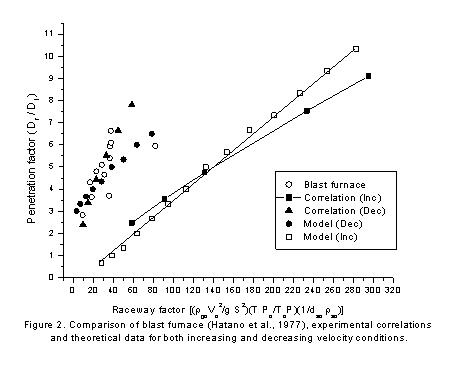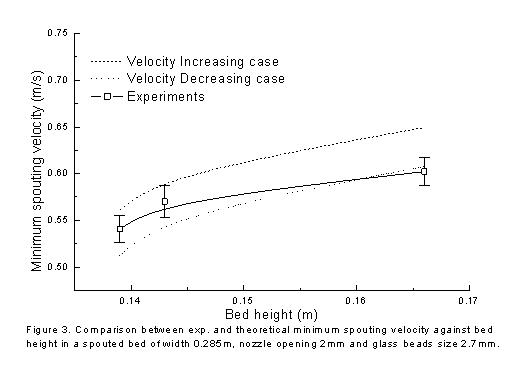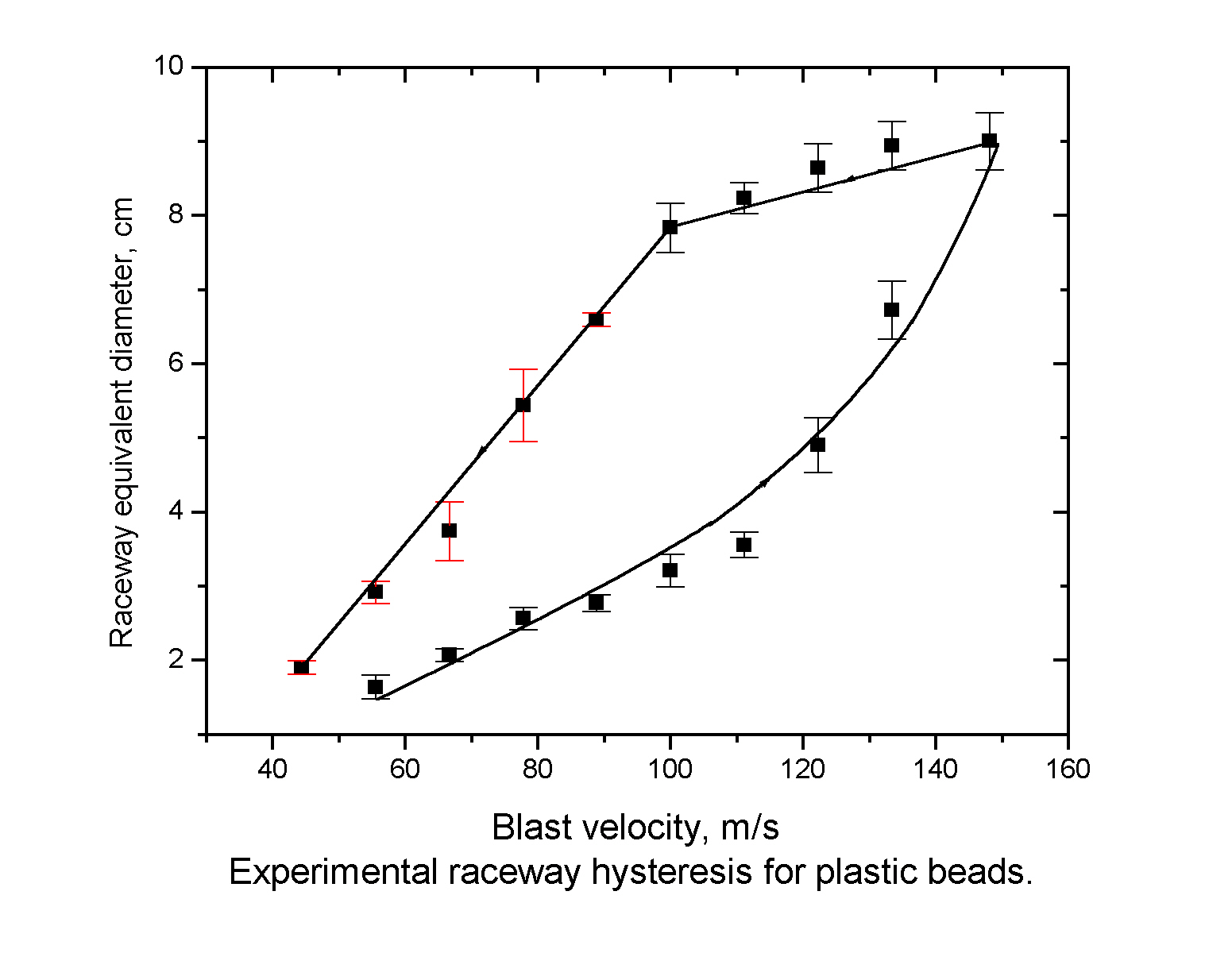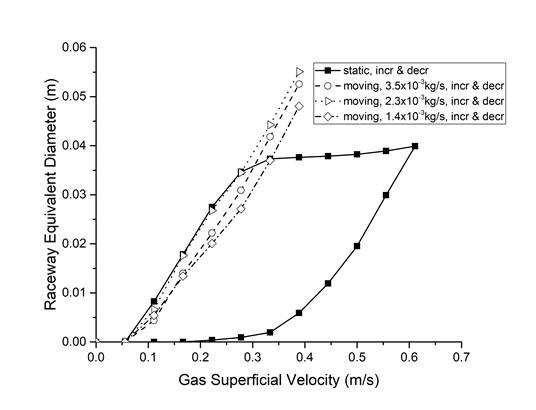|
RACEWAY HYSTERSIS |
|
Figure 1.
|
This
research is of fundamental in nature and our research group is the
first to identify, explore and explain the cavity hysteresis phenomena
in a packed bed. The group has contributed significantly in
understanding this phenomenon both experimentally and
theoretically.
Hysteresis
in Stationary Bed
When gas is injected in a packed bed
through a nozzle, a gas cavity is formed in front of the nozzle. This
gas cavity increases in size with increasing gas velocity, and finally
breaks after a certain gas velocity is crossed. A phenomenon observed
during cavity formation is that of cavity size hysteresis. If the gas
velocity is increased till a certain maximum velocity (well below
cavity breaking limit), and then decreased slowly, the cavity size
remains unchanged till a certain gas velocity and then starts
decreasing with decreasing gas velocity. This is termed as cavity size
hysteresis (Figure 1). The size of cavity is very important as it
dictates the gas penetration into the bed. This has great implications
in the Blast Furnace study, where this cavity is termed as the raceway.
A pseudo 2-D model has been developed by our group to predict this
hysteresis in cavity size. As can be seen from the figure above, the
prediction from the model is very encouraging, except at little low gas
flow rates. To establish the exact cause and nature of cavity size
hysteresis, 2-D studies were carried out considering the packing as
granular medium and studying it's interaction with changing gas flow.
Both continuum and discrete element method (DEM) based models have been
developed for granular material and it's interaction with gas flow was
studied. It is found that inter-particle interaction forces along with
gas drag and bed porosity play an important role in describing the
cavity size hysteresis. The injection of gas flow allows the particles
to go to an unconstrained state than they were previously in, and their
ability to remain in that state, even under decreased gas drag force,
leads to the phenomenon of cavity size hysteresis. This
study gives a fine example that how an experimental study
(understanding of physics) can lead to a better and improved
mathematical model. The applications of this theory are
shown in Figures 2 and 3.
|
 |
 |
|
Hysteresis in Moving Bed Above results confirm the existence of the cavity hysteresis phenomenon in a stationary packed bed. However, there are many reactors (such as blast furnace and catalytic reactor) which have cavity/raceway presence in moving bed. Therefore, studied have been carried out for cavity hysteresis in moving bed. For moving beds, it is found that the cavity hysteresis phenomenon is absent, except at a very low particles flow rate. It is also observed that raceway size in the moving bed is independent of the bed height and solid mass flow rate, except for a very low solid/particles flow rates. Results confirm the previous hypothesis that if there are no frictional forces then there would not be any raceway hysteresis in the system. The study also confirms that the raceway size obtained in a stationary packed bed for decreasing gas velocity condition is similar to that obtained in the moving beds as shown figure 4.
Figure 4: Comparison of raceway size hysteresis in stationary and moving bed at 800mm bed height.
For further details or queries or publication related to this, kindly contact us at the address given on the web-site. |

